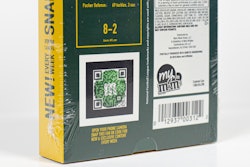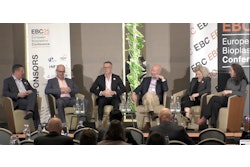At a potluck, everyone brings their favorite dish to the table. You join the line to serve up your meal, but as you look down the table, there is an overwhelming assortment of food and you have to decide where to start, what to select, and how to fit it all on your plate.
Contrast that with a full-course meal: Beginning with appetizers, the meal is presented to you, one course at a time, each designed to enhance the previous course and tease the one to come. All the flavors, textures, and even portion sizes work together to create an immersive experience that aims to leave you delighted and eager to share the experience with others.
Progressive disclosure is the full-course meal of packaging; it enhances the experience one action at a time, letting it build on the previous steps while anticipating what comes next.
With a purchase complete and product in hand, it is easy for a consumer to become overwhelmed by the next steps required to enjoy their recent investment. Whatever the product, you do not want them to look at a package of pieces and parts and feel lost and confused. You want a positive first impression that they want to share with others, furthering your brand equity.
How do you do it? How do you create that positive first impression? The key to “some assembly required” happiness is Progressive Disclosure. Simply put, Progressive Disclosure is presenting the least amount of information needed, as it’s needed, to accomplish a goal.
I think unboxing videos are popular because those first facial expressions don’t lie. Did the product meet the unboxer’s expectations? It’s hard to fake that first reaction upon opening a package. Recently, a colleague shared a story about assembling a dollhouse for her niece. She was forced to open the bottom panel of the container and, when she did, all the (unsecured, unprotected) pieces, hardware, and instructions poured out into a jumbled, confusing pile. Potluck! Many of the pieces were not numbered, the instructions were less than helpful, and the hardware was in unmarked bags. Even though the end result was beautiful and well-constructed, the negative experience was what she remembered most and what she chose to share about the brand experience.
Contrast that with the Lego set she helped her nephew assemble. Legos are sorted into bags of pieces that are roughly similar in size. The instructions are nearly as engaging as the product itself: stapled booklets in full color, on glossy paper, with illustrations displayed on a background that relates to the set’s theme. They patiently walk the builder through assembly, step-by-step. They’re created for an international audience, with no words at all, so even non-reading children can easily understand what to do. For each step, there’s a graphic of the pieces needed to complete the current step, with an indication of how many of each will be used. Each step builds upon the collective work; newly added pieces are in bold colors against the up-to-now assembled project, shown in faded colors. It is very easy to discern what is needed, where it will go, and how it relates to the project as a whole. Part of the joy of building with Legos is seeing how all the small parts fit together to create the larger work. Legos are a shining example of a full-course Progressive Disclosure feast.
What experience are you providing for consumers—a potluck dinner or a full-course meal? There’s nothing inherently wrong with potluck, but when it comes to packaging, is that really the experience you’re looking to provide? Or do you want to walk your consumers through the process, guiding them each step of the way, so they don’t get lost and frustrated, even if you aren’t personally sitting next to them?
It doesn’t hurt to establish a personal connection, either. I recently unboxed an electronic device. When I lifted the lid off the box, the instructions were front and center with a simple message: “Read me. I’m important.” Even if I had skipped reading them, I would still have known what to do next, because beneath the instructions was the device, with the charger tucked beneath a perforated flap with the words, “Charge me for at least two hours,” printed directly on the packaging. To get to the charger, I had to touch the instructions. The comments, seeming to come directly from the device, made me smile. The steps to a positive experience were unavoidable by progressively disclosing instructions.
Have you looked at your product recently? Have you handled it? Have you taken that box, opened it, and put the components together as if you were a new user? Better yet, have you watched your customers unbox and assemble your product for the first time? Watch and take note of their comments and reactions; you might be surprised at what you discover. Tracking and reporting the influence packaging has on consumer behavior is the focus of my research team.
Your product is constant—it likely cannot be changed, and that’s okay. By identifying moments of negativity (doubt, frustration, confusion, etc.) and not only eliminating them from the experience, but also replacing them with progressively disclosed information, you can improve consumer interaction with your product without needing to change the product itself. It’s a potentially simple and relatively inexpensive way to make positive improvements. Labels and instructions that are easy to understand tell the consumer that you’re working for them and let them know you care how they feel while they’re handling your product. And, honestly, who doesn’t like to know that someone cares about their feelings?
To recap:
● Progressive disclosure minimizes information overload
● Information is better received when presented in a unique or humorous context
● Each stage of an unboxing or assembly process should build on the one before
● Always watch the unboxing experience live, and take notes on what users value and see first
Dr. R. Andrew Hurley is the founder of Package InSight and The Packaging School, and an Associate Professor at Clemson University. He can be reached at [email protected]



























